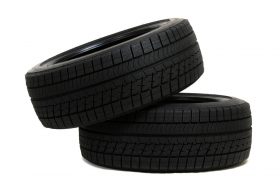FAQs About What to Do When You Get a Flat Tire

Getting a flat tire is something that will inevitably happen to just about every driver at some point. It can easily happen to anyone, regardless if they drive a minimal amount or drive many miles a day or whether they spend a lot of time on the freeway or mostly stick to side streets. But nobody ever goes out for the day expecting to end up with a flat tire and when it happens, it’s easy to get flustered and not be sure what to do next. Here are a couple of common questions people have.
Can I Drive on a Flat Tire?
Generally speaking, it’s best to avoid driving on a flat tire more than is absolutely necessary. Driving with a flat tire can impact the way your car handles, making it more difficult to maneuver, as well as potentially causing damage to things like your suspension or steering system, which can be much more expensive to fix than a flat tire.
At most, it’s best to only drive your car for the sake of moving it to the side of the road or to another safe location while you replace the tire yourself or wait for roadside assistance to come. Driving on a flat tire isn’t great, but if you can immediately pull over or move into a parking lot, it’s better than being stopped on the roadway.
If you are very close to a location like a gas station or a mechanic shop, no more than about a mile or mile or a half, keep your speed down around around 20 MPH and only proceed if you can reach the destination by taking a road that doesn’t have lots of bumps or potholes, the road is straight not curved, and doesn’t require a lot of turns.
How Long Can I Drive on a Spare Tire?
Let’s say you have a spare tire and have the tools you need to change your flat tire. That’s great news, but keep in mind that spare tires aren’t necessarily always the same as your regular tires. If you have a full-size spare tire, you’re good to go. But if you have a donut tire, you’ll need to be careful about your speed and how far you’ll be driving. In general, it’s recommended that donut tires not be driven at speeds above 50 MPH and not be driven for more than 50-70 miles total. Since driving on a donut can impact other components of your car, such as the differential, spending too much time with the donut can take a toll on your vehicle.
Driving with a donut can also impact ABS and traction control systems, so it’s a good idea to essentially drive like you would on a snowy or icy day. Watch your speed, increase your following distance, give yourself extra time to stop, and don’t use cruise control.
Get Help from a Michigan Car Accident Lawyer
If you’ve been injured in a car accident, don’t hesitate to get help from a car accident lawyer. You can’t always count on insurance companies to do the right thing. After all, they have a vested interest in paying out as little as possible, so they often don’t want to think about the big picture. At Goodwin & Scieszka, you’ll be able to talk to a lawyer highly experienced in handling Michigan motor vehicle cases, including car accidents, truck accidents, and motorcycle accidents. Contact us today to find out how we can help.






